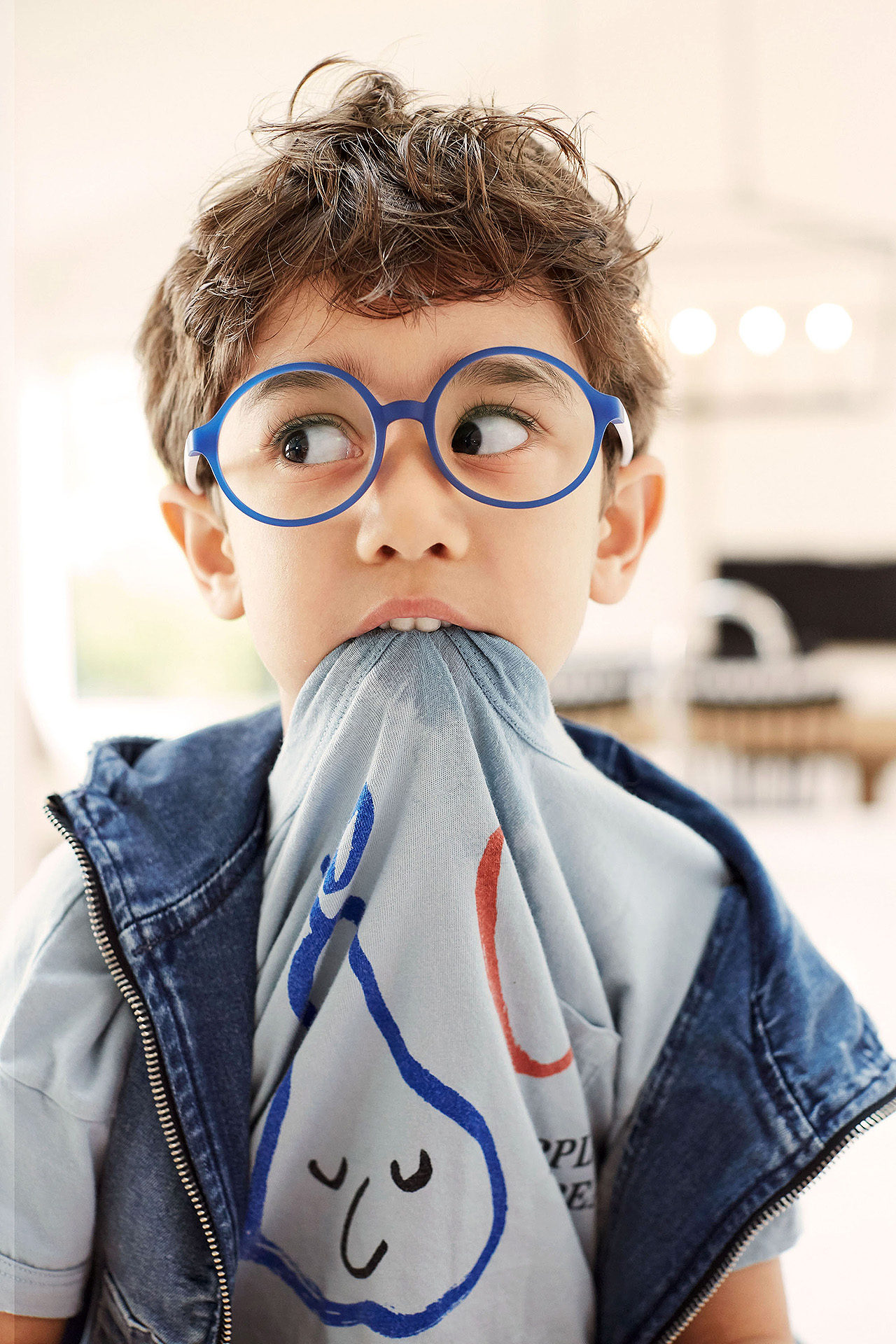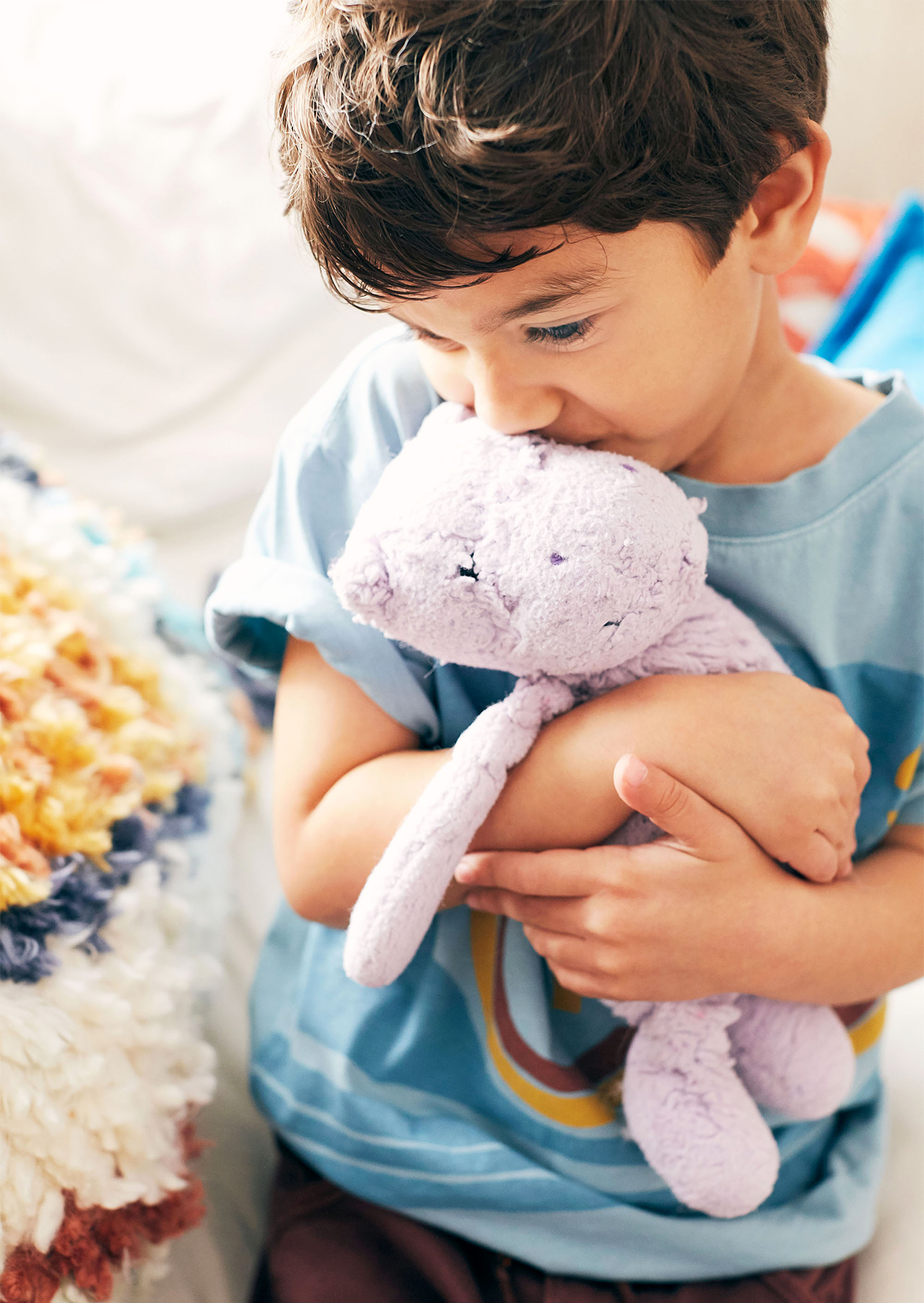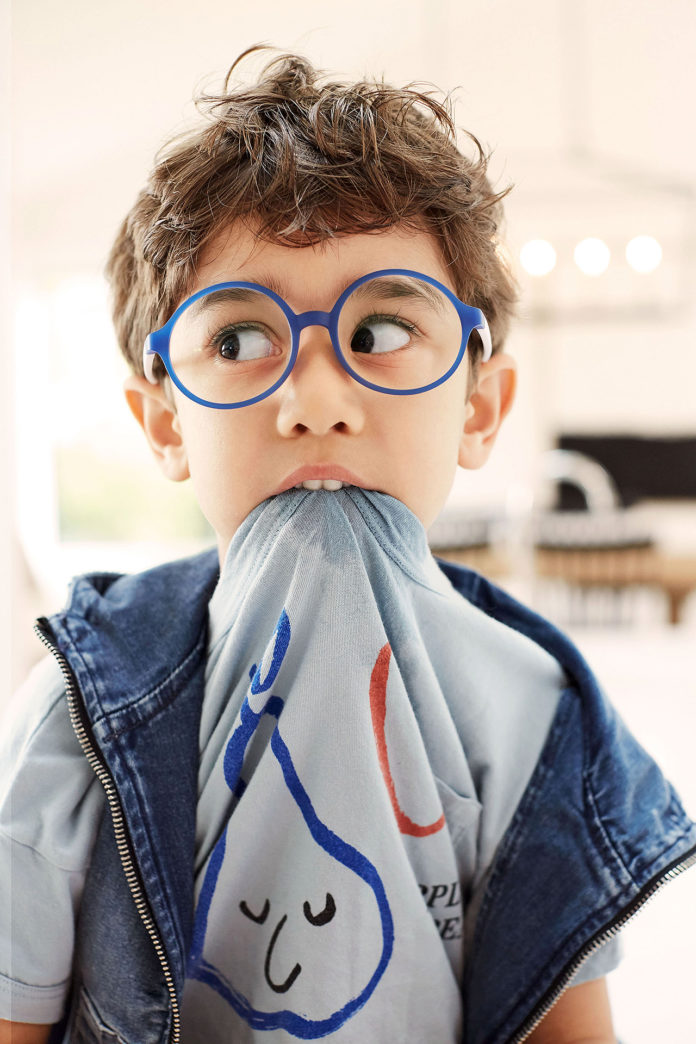
"My 6-year-old is a squeezer," says Amanda Ponzar, of Alexandria, Virginia. "He used to squeeze the flabby underarm of every lady he encountered: Me, his grandma, his teachers." Sometimes he'd accidentally squeeze too hard, or sometimes he'd squeeze a stranger. "I was always apologizing for him, and his father punished him," says Ponzar. "We didn't know why he was doing this."
Erin Haskell's daughter is a rocker. "Ever since Mollie was 2, she would lie down with her hands clasped together over her chest and rock back and forth for a good 20 minutes before she went to sleep. I didn't know what to make of it," says Haskell, of Windham, Maine. "I was worried enough that I brought it up at her well visits until she was 8 years old."
Me? I've got a mouther. I'm always barking at my oldest to take the Lego, the remote, or the random bit of a deconstructed action figure out of his mouth. And he's not a baby. Far from it. He's nearing tweendom, and yet, still, Legos in the mouth all the time. Your kid? Maybe they constantly fidget with their backpack Beanie Boo, or sniffs an old stuffed animal, like, a lot, or spins in circles a little too long for your comfort.
These "quirks" often baffle, irritate, embarrass, and legit worry parents. "Nowadays, if you search 'rocking back and forth,' you may land on a website about mental illness. Or you describe a few quirky behaviors on a parenting board, and the next thing you know, a 'helpful' mom is diagnosing your kid with autism, sensory-processing disorder, or anxiety," says Lindsey Biel, a pediatric occupational therapist and coauthor of Raising a Sensory Smart Child. While no one wants to rewind to a time when parents weren't aware of early symptoms of neurological differences, the pendulum has no doubt bonked a few just-plain-quirky kids as it's swung to the other extreme.
In fact, up to 70 percent of typically developing kids engage in repetitive and seemingly purposeless movements like leg shaking, nail biting, or hair twirling, according to a 2018 report in the journal Seminars in Pediatric Neurology. And not only are these quirks normal (hello, what adult doesn't do at least one of these things), but kids have them for a reason: They're a way to self-regulate one's senses.
"Once you understand why your child is doing what the
"Once you understand what your child is doing why they're doing and the purpose it serves, you'll no longer look at it as a quirky habit but as behavior with a purpose," says Amanda Bennett, M.D., a developmental pediatrician at the Children's Hospital of Philadelphia.
Here are four of the most common quirks.
Sucking on Things
"Kids who gravitate toward mouthing, chewing, and sucking may be doing so because their mouth is somewhat undersensitive," says Biel. In other words, your shirt sucker may have decreased oral sensory sensitivity and require more in-the-mouth input to satisfy that need. "For these kids, it's likely that this mouthing behavior releases feel-good, soothing neurotransmitters like serotonin and dopamine, which help them feel calm, less bored, and more engaged," explains Biel.
Mouthers are often the same kids who drooled past babyhood, experienced a speech delay, or are messy eaters, says Biel. "They often have trouble mastering precise movements of their lips and mouth because they simply don't process those tactile sensations as well as other children."
While these behaviors are generally harmless, you'll want to brainstorm and redirect if your child's chewie du jour is a germ fest, a choking hazard, or otherwise harmful. For instance, if thumb or finger sucking continues beyond age 2 to 4, it can affect the shape of a child's mouth or cause an ortho issue like an overbite, according to the American Academy of Pediatrics.
"When I spot my own 10-year-old daughter chewing a necklace or a pen cap mindlessly while watching TV, I try to remember to hand her a piece of gum—not snap at her to stop," says Dr. Bennett. "Gum fulfills the same oral need, which is probably why many progressive schools now allow kids to chew gum in class." Not only is gum chewing a safe alternative for the over-4 set, but the act increases alertness and enhances cognition, according to a study in the Journal of Behavioral and Neuroscience Research.

Rocking and Spinning
While a kiddo who rocks themself to sleep may seem worlds apart from one who spins in circles after a long day of school, they're not. Both are working hard to jostle the fluid, the hairs, and the tiny calcium-carbonate crystals in their inner ears that make up the vestibular system, which monitors motion and balance, says Lucy Jane Miller, Ph.D., clinical director of STAR Institute for Sensory Processing Disorder, in Greenwood Village, Colorado.
Kids who naturally rock, spin, swing, or bounce likely have a vestibular system that requires more movement than most because they have a lower-than-average sensitivity to the stimuli. The key with these quirks? Knowing when enough is enough. "There's something called an inverted U-curve," says Dr. Miller. "When a child spins, their arousal goes up and their ability to stay calm and focused improves. That is, until they get to the top of the curve, when arousal continues to go up but performance goes down."
Going overboard can bring on both immediate and delayed sensory-overload issues. "It's important to work with your child, and possibly an occupational therapist, to pinpoint the top of the curve," says Dr. Miller. For instance, you may want to limit your spinner to one revolution a second for no more than ten revolutions, and then switch directions. "Stopping and restarting benefits kids by giving the most information to their vestibular receptors, which process movement information," says Biel. It's also smart to have special toys at home that fulfill your child's sensory needs, like a hobbyhorse, a rocking Rody rider, a Dizzy Disc Jr., or a Sit 'n Spin.
While Mollie still rocks to settle down for bed (she curbs her quirk on sleepovers), her mom jokingly wonders whether Mollie will be rocking her way into college and beyond. Chances are, she won't. As rockers and spinners age, their habits often morph too. "One of my young clients was a bouncer and bed roller, and she wound up going to college on an equestrian scholarship," says Biel. "Like a lot of kids, she turned to athletics that offered her a lot of whole-body sensory input, including stimulation of the vestibular system, deep pressure, and joint compression." Besides horseback riding, gymnastics and swimming have a similar effect.

Sniffing Things
My kiddo is also a sniffer. He's been carrying around a stuffed duck since forever. He snuggles that old bird up to his nose and inhales deep yoga-worthy breaths. Biel isn't surprised by my son's continued love of the lovey. "Does he do it when he's sleepy or when he's upset?" she asks me. Yes and yes.
"Smell is the one sensory system that connects directly with the limbic system, which is the emotion, memory, and pleasure center of the brain," says Biel. "It's all about association, and kids often sniff things that conjure up pleasant memories that they find comforting."
These soothing smells can simply help a child feel more safe and secure—or relaxed enough to facilitate sleep. And when you think about it, we all have throwback smells that we turn to for an olfactory hug of sorts. "It's why realtors use the smell of apple pie to help sell homes," says Biel. "It's just that some kids are looking for more sensory information than others; they're hyposensitive and sometimes seek out smells that aren't traditionally considered comforting, like Play-Doh or crayons."
Fidgeting
"Touching, feeling, squeezing, poking, hair twirling, and all other similar forms of fidgeting generate sensations that feed a child's hunger for touch—and often his need for a very specific type of small movement as well," says Dr. Miller. The body releases the feel-good neurotransmitter oxytocin in response to finger and hand tactile-seeking movements, like repeatedly touching a soft tag or gently stroking one's hair, according to one study in the journal Frontiers in Psychology.
Beyond the calming effect, fidgeting can help kids concentrate too. "We know that all children move more during challenging mental activities than they do during ones that are less challenging," says Michael J. Kofler, Ph.D., associate professor of psychology at Florida State University, in Tallahassee. "Children are using small movements to stimulate their brain. For some kids, particularly those with ADHD, the fidgeting helps keep their brain engaged and bolsters working memory."
However, the once-popular fidget spinner has actually been found to do the opposite. "When kids use fidget spinners in the classroom, they're actually more distracted," says Dr. Kofler.
It's important to find a way to fidget that actually works for your child—without disrupting class. "We were lucky," recalls Ponzar, mom of the serial arm squeezer. "My son's preschool teachers took it upon themselves to make homemade squeeze balloons filled with baking soda. They kept them in their apron pockets and handed one to my son when he needed to squeeze." And his arm squeezing came to a stop—almost.
"Sometimes when he sits in his fuzzy blue bean-bag chair while we're reading a story, he'll start to knead my arm again," says Ponzar. "I'll say, 'Let's get your squeezy balloon,' and it's a quick fix. He loves that balloon so much, he sleeps with it under his pillow."
When A Quirk Is A Bigger Deal
If your child's behavior interferes with their everyday functioning—say, they're so bothered by noise that they hate recess or won't ride the school bus—it could be a sign of a sensory-processing disorder, says Sara O'Rourke, an occupational therapist at Nationwide Children's Hospital, in Columbus, Ohio. Kids with the condition can't respond appropriately to the signals coming from their senses, while those with normal quirks have found a way to self-regulate.
If you're concerned, talk to your child's pediatrician, who can refer you to an occupational therapist for strategies. And keep in mind: It's okay if you're embarrassed by your child's quirk.
"That's a valid feeling that parents experience," says Dr. Lucy Jane Miller, of STAR Institute. "We want our kids to fit in, and we don't want others to judge them." While a quirk itself is likely no biggie to children, one study in the Seminars in Pediatric Neurology found that their frustration mounts when their parents and teachers try to stop their behavior.
So before you do, ask yourself: Is my child embarrassed? If not, and the quirk doesn't interfere with other aspects of life, ignore it and know that other kids fulfill their sensory needs too. Kind of like how you chew gum instead of putting Legos in your mouth.
Parents Magazine













